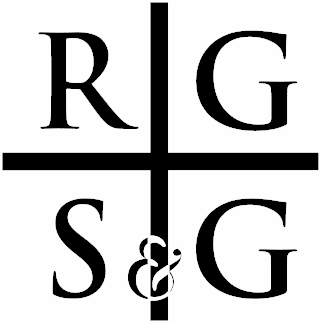 Many Pennsylvania drivers are well aware of the emotional and financial impacts inherent in automobile accidents. Costs associated with medical attention and car repair are compounded by the time and income lost from work. Car crashes are frequent events with significant consequences, including substantial economic costs such as direct costs, productivity losses, and total costs to individuals and society. Unfortunately, when the economy is good, there is a higher number of vehicle accidents on U.S. roads.
Many Pennsylvania drivers are well aware of the emotional and financial impacts inherent in automobile accidents. Costs associated with medical attention and car repair are compounded by the time and income lost from work. Car crashes are frequent events with significant consequences, including substantial economic costs such as direct costs, productivity losses, and total costs to individuals and society. Unfortunately, when the economy is good, there is a higher number of vehicle accidents on U.S. roads.
According to the National Safety Council, the number of automobile fatalities rose to over 40,000 deaths by 2007, but this number decreased after the beginning of the recession. Now this number is on the rise again as the economy continues to improve. Motor vehicle crash deaths are a major public health statistic, and trends in the U.S. often differ from those in other high-income or OECD countries, highlighting the need for international comparisons.
When the economy is good, people have jobs, which means they drive more frequently to and from work. Likewise, individuals with more economic freedom may feel comfortable going on longer road trips. Cheaper gas prices also mean that more people can afford to be out driving. Economic expansions are associated with higher fatality rates and riskier driving behaviors, such as increased alcohol consumption, which can lead to more fatal crashes.
Texting while driving is also on the rise, with 70 percent of drivers now utilizing their smartphones while on the road. The period of time between Memorial Day and Labor Day produces the most deadly car wrecks. Previous studies have shown a temporary increase in certain types of fatal crashes during periods of economic growth. The factors specified by the NSC may make the upcoming summer driving season one of the most dangerous since 2007.
Individuals who have been involved in a vehicular accident that was caused by another driver’s negligence may want to obtain the services of an experienced personal injury firm. Legal counsel could help individuals secure compensation to lessen the strain of the costs associated with an accident. Direct costs such as property damage, medical expenses, and legal fees are only part of the total costs of such accidents, which also include productivity losses. An experienced lawyer may assist a person who has been involved in an auto accident as he or she navigates through the process of filing a claim and seeking a settlement.
Economic research and existing literature have explored the relationship between macroeconomic conditions and traffic fatalities, often using regression analysis with independent variables such as unemployment rates and registered vehicles to understand these trends. The baseline model in such economic research typically uses fatality rate as the dependent variable and incorporates robust standard errors and an error term to ensure reliable results.
Car safety and safer vehicles, supported by advancements in the automobile industry, have contributed to reducing fatality rates over the last decade, though fluctuations remain. Post-crash care is also an important part of a comprehensive approach to reducing motor vehicle crash deaths.
Labor statistics are crucial for analyzing economic activities and their impact on road traffic crashes, as changes in employment can influence driving patterns and exposure. Important policy implications arise from understanding the important risk factors and the lesser extent to which some factors contribute to fatal crashes. On the world’s roads, the global burden of road traffic crashes remains high, emphasizing the need for international comparisons with OECD countries.
The number of other cars and other drivers on the road during economic expansions can increase the risk of multi-vehicle crashes. Economic recessions can lead to a temporary reduction in traffic fatalities, but these reductions may not persist as economic activity resumes.
The standard deviation in fatality rates during economic cycles highlights how the last decade has seen notable fluctuations in these rates. Registered vehicles are often used as a measure of exposure in regression analysis of motor vehicle crash data, helping to clarify the relationship between economic cycles and accident rates.
Introduction: The Surprising Link Between Economic Growth and Road Safety
The connection between economic growth and road safety is more complex than it might first appear. As economies expand, increased mobility and access to transportation can improve quality of life, but they also bring heightened risks on the world’s roads. According to the World Health Organization, road traffic injuries are a leading cause of death and disability globally, resulting in approximately 1.35 million fatalities and 50 million injuries each year. In the United States alone, motor vehicle crashes account for over 37,000 fatalities and 2.5 million injuries annually, placing a significant economic burden on families, communities, and the nation as a whole.
The direct and indirect costs of these crashes exceed $240 billion each year, underscoring the urgent need to address road safety as economies grow. Understanding the factors that drive motor vehicle crashes during periods of economic growth is essential for developing effective strategies to reduce crashes and protect public health.
Economic Factors Driving Changes in Accident Rates
Economic growth is a powerful driver of changes in accident rates, particularly when it comes to motor vehicle crashes. As the economy improves, more people are able to purchase vehicles, commute to work, and travel for leisure, leading to an increase in the number of vehicles on the road. This surge in economic activity often results in more miles driven and, consequently, a higher risk of crashes. Additionally, periods of economic growth can influence driving behaviors, with studies showing increases in speeding and drunk driving during these times.
According to the National Highway Traffic Safety Administration, the economic costs of motor vehicle crashes in the United States exceed $340 billion annually, with each fatal crash costing over $6 million on average. Research further indicates that a one percentage point increase in gross domestic product can lead to a 0.5% rise in motor vehicle fatalities. These findings highlight the importance of considering the impact of economic growth on road safety and the need for targeted policy interventions to mitigate the risks associated with increased economic activity.
Causes of Traffic Accidents in a Growing Economy
A growing economy brings with it a range of factors that can contribute to an uptick in traffic accidents. As more people take to the roads, the total number of vehicle miles traveled increases, raising the likelihood of motor vehicle crashes. Economic growth can also lead to riskier driving behaviors, such as drunk driving, speeding, and distracted driving, all of which are major contributors to fatal accidents.
The Centers for Disease Control and Prevention has found that drunk driving incidents tend to rise during periods of economic expansion, especially among young adults. Conversely, during economic downturns, the use of seat belts and other safety measures may decline, further increasing the risk of serious injuries and fatalities. Seat belts remain one of the most effective tools for preventing fatal injuries in crashes, reducing the risk by up to 45%. These patterns underscore the importance of promoting safe driving habits and enforcing road safety measures, particularly during times of economic growth.
Consequences of Increased Automobile Accidents
The rise in automobile accidents during periods of economic growth has far-reaching consequences that extend beyond the immediate aftermath of a crash. Motor vehicle crashes can result in serious injuries, loss of life, and significant property damage, placing a heavy economic burden on individuals and society.
In the United States, the total economic costs of motor vehicle crashes are estimated to exceed $240 billion annually, factoring in medical costs, lost productivity, and property damage. The human toll is equally significant, as families and communities grapple with the loss of loved ones and the long-term impact of serious injuries.
Additionally, increased motor vehicle use contributes to environmental challenges, with the transportation sector responsible for about 27% of total U.S. greenhouse gas emissions, according to the Environmental Protection Agency. These consequences highlight the need for comprehensive strategies to address the economic, social, and environmental impacts of increased motor vehicle crashes.
Motor Vehicle and Road Safety: Current Measures and Challenges
Efforts to improve motor vehicle and road safety have led to the development and implementation of a range of safety features, including airbags, anti-lock braking systems, and electronic stability control. Public awareness campaigns and educational programs continue to emphasize the importance of seat belts, safe speeds, and the dangers of drunk driving. Despite these advances, significant challenges remain in reducing road traffic deaths and injuries.
Effective enforcement of traffic laws and the adoption of advanced safety technologies are critical to further progress. The safe system approach, which focuses on safe road users, safe vehicles, safe speeds, and safe roads, offers a holistic framework for tackling these challenges.
Countries such as Australia and Sweden have demonstrated the effectiveness of this approach, achieving notable reductions in road traffic deaths and serious injuries. Continued commitment to innovation, enforcement, and education is essential to making roads safer for everyone and reducing the incidence of motor vehicle crashes and fatalities.

Rubin, Glickman, Steinberg & Gifford P.C.
Pennsylvania Attorney's
September 16, 2025









